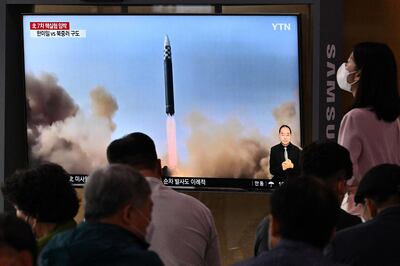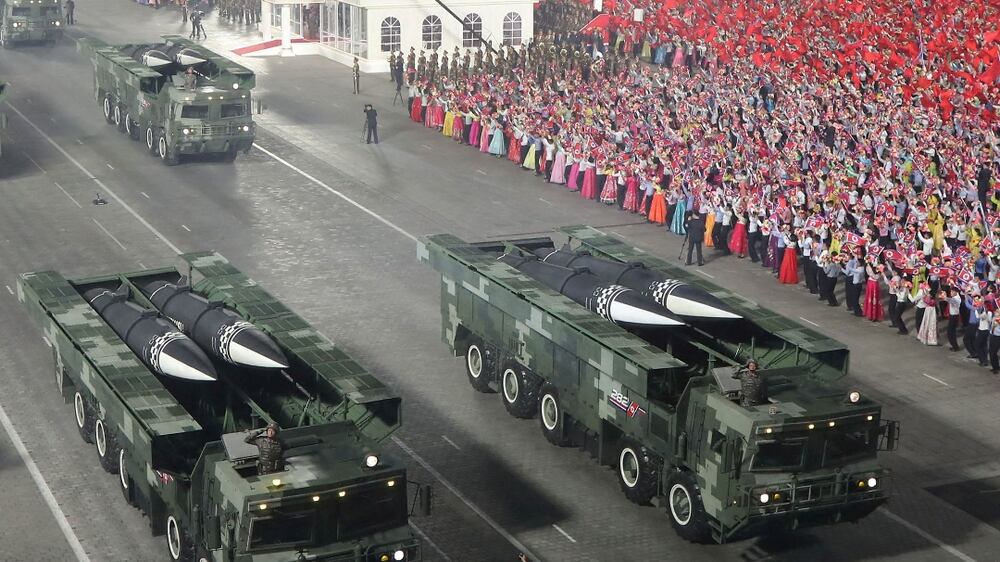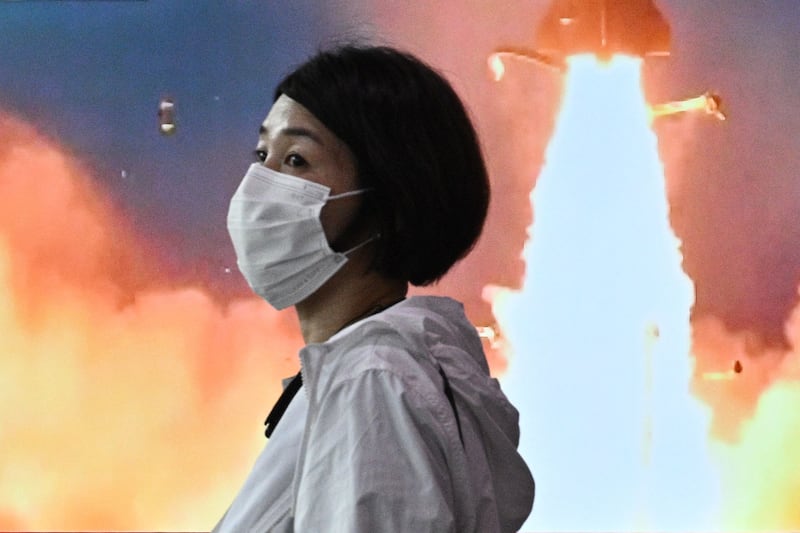North Korea fired eight short-range ballistic missiles towards the sea off its east coast on Sunday, probably its largest single test, a day after South Korea and the US ended joint military drills.
The bilateral exercises involved an American aircraft carrier for the first time in more than four years.
South Korea's Joint Chiefs of Staff said that at least eight missiles were fired from the Sunan area of the North Korean capital Pyongyang and they flew between 110-600 kilometres at altitudes between 25km and 90km.
In response, South Korea President Yoon Suk-yeol convened a National Security Council meeting and ordered “expanded deterrence of South Korea and the United States and continued reinforcement of united defence posture”.

The NSC meeting concluded that the missile launch was North Korea's “test and challenge” of the security readiness of South Korea's new administration, which took office last month, the president's office said in a statement.
South Korea's Ministry of Foreign Affairs said Kim Gunn, its Special Representative for Korean Peninsula Peace and Security Affairs, discussed the provocation with US Special Representative Sung Kim, the US point man on North Korean affairs. Kim Gunn also held a telephone conference with his Japanese counterpart Funakoshi Takehiro.
Japanese Defence Minister Nobuo Kishi said the North had launched multiple missiles, and that the act “cannot be tolerated.” He said at a briefing that at least one missile had a variable trajectory, which indicates it could manoeuvre to evade missile defences.
The US Indo-Pacific Command said in a statement that North Korea's multiple ballistic missile launches highlighted the destabilising impact of its illicit weapons programme but that the event didn't pose an immediate threat.
Michael Duitsman, with the US-based James Martin centre for Nonproliferation Studies (CNS), said it appeared to be the largest single test ever by North Korea. A large number of missiles also suggests a military drill or show of force, rather than a test of new technology.
The launch also followed a visit to Seoul by Sung Kim, who departed on Saturday.
He met his South Korean and Japanese counterparts on Friday to prepare for “all contingencies” amid signs North Korea was preparing to conduct a nuclear test for the first time since 2017.
MORE SANCTIONS
Washington has made very clear directly to Pyongyang that it is open to diplomacy, Kim said during the visit, noting that he was willing to discuss items of interest to Pyongyang, such as sanctions relief.
Last week, the US called for more UN sanctions on North Korea over its ballistic missile launches, but China and Russia vetoed the suggestion, publicly splitting the UN Security Council on North Korea for the first time since it started punishing it in 2006, when North Korea conducted its first nuclear test.
In recent weeks, North Korea has test-fired a range of missiles, including its largest intercontinental ballistic missile (ICBM).
North Korea's last tests were on May 25, when it launched three missiles after US President Joe Biden ended an Asia trip where he agreed to new measures to deter the nuclear-armed state.
The first missile appeared to be the North's largest ICBM, the Hwasong-17, while a second unspecified missile appeared to have failed mid-flight, South Korean officials said at the time. The third missile was a short-range ballistic missile (SRBM).
North Korea displays ICBMs at huge parade

On Saturday, South Korean and American ships concluded three days of drills in international waters off the Japanese island of Okinawa, including air defence, anti-ship, anti-submarine, and maritime interdiction operations, South Korea's Joint Chiefs of Staff said.
The exercises included the USS Ronald Reagan, a 100,000-tonne nuclear-powered aircraft carrier, among other major warships.
South Korea's president, who took office on May 10, had agreed with Biden to increase bilateral military drills to deter North Korea.
North Korea has criticised previous joint drills as an example of Washington's continued “hostile policies” towards Pyongyang, despite its talk of diplomacy.





